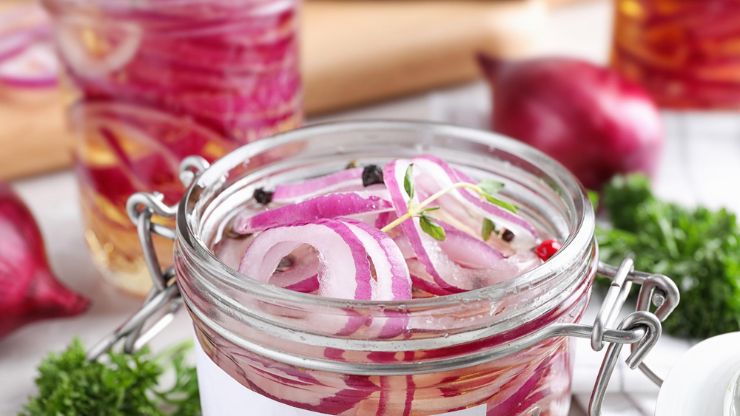Embark on a mouthwatering adventure as we immerse ourselves in the intricate art of Fermenting Pearl Onions for Zesty Pickle Trays. In this culinary exploration, we’ll unveil the closely guarded secrets to preserving these petite treasures, elevating their innate zesty goodness to new heights.
Picture yourself in a kitchen filled with the delightful aroma of fresh ingredients and the promise of creating something extraordinary. The journey begins with the careful selection of the finest pearl onions—small, yet powerful vessels of flavor. These tiny marvels hold the potential to transform your pickle trays into culinary masterpieces.
It’s like opening a present that’s full of tasty surprises as we get deeper into this process. Making a brine bath with great care is the key. This magical mixture will add a symphony of flavors to the onions. We balance the ingredients to get the perfect balance of tastes. This is where the real magic of pickling starts.
Table of Contents
ToggleFermenting Pearl Onions For Zesty Pickle Trays: Unveiling the Process
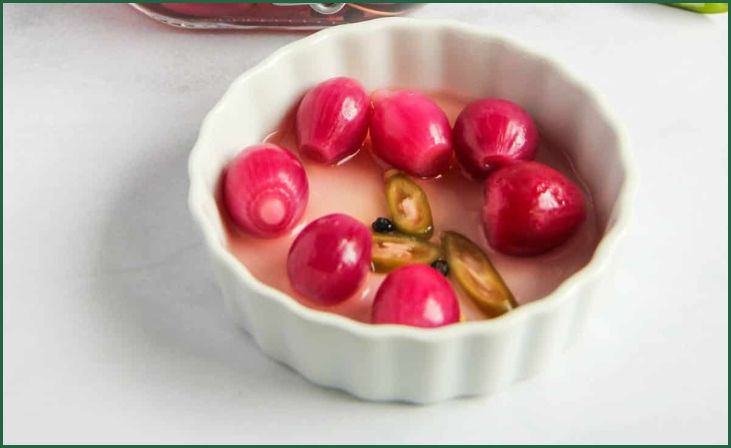
Starting the process of Fermenting Pearl Onions for Zesty Pickle Trays is an exciting journey through flavors and craftsmanship. Let’s look into the complicated steps that turn plain pearl onions into delicious, tangy treats that will make your pickle trays look beautiful.
Choosing the Right Onions
The saga commences with a crucial decision—the selection of the perfect pearl onions. Picture a scene at the market where you meticulously choose fresh and firm pearl onions, setting the stage for the culinary masterpiece to come. If you choose onions that are just the right amount of firm, you will get the best flavor and texture in every bite.
Also Read:- Equipment For Fermenting Vegetables
Preparing the Brine Bath
The most important part of the process is making a delicious brine bath, an elixir that will give the onions the perfect balance of flavors. Explore this alchemical mix, where water, salt, and a hint of magic come together to create the pickling transformation. LSI Keywords like “Onion brine” and “pickling solution” make this step stand out as a crucial one for perfect pickling.
Infusing Flavor with Spices
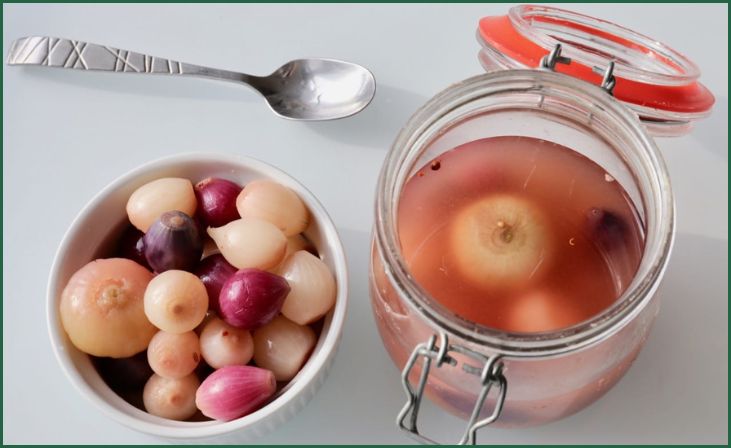
As the journey goes on, we enter the world of spices, a place where imaginations can run wild. Elevate your pickle trays by exploring a myriad of spices to infuse into the brine. Picture the aromatic dance of garlic, the freshness of dill, and the boldness of other spices converging to create an explosion of taste. This step transforms the pickling process from a routine to an art form, ensuring each onion carries a symphony of flavors.
Packaging Perfection
Packaging becomes an integral part of this culinary tale. Learn the art of packing your pearl onions in jars for optimal fermentation. Envision the precision required in arranging each onion, creating a visual delight that mirrors the forthcoming sensory experience. The inclusion of LSI Keywords such as “Jar packing” and “fermenting containers” underscores the importance of this step in preserving the essence of the pickling journey.
Don't just scroll, subscribe!
BuzzTrail's unique web-stories are the cure for boredom you've been waiting for.
The Fermentation Dance
Once the jars are closed, the fermentation process can begin. Learn about the details of this changing process. The bubbling excitement inside each jar means that tasty treats are about to be born. Imagine the subtle but profound change that will happen as your pearl onions turn into pickled perfection, ready to make your taste buds dance with every crunch.
Monitoring and Adjusting
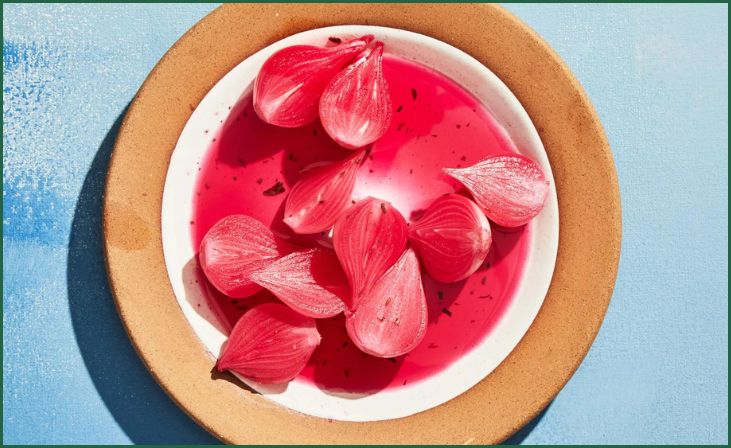
The narrative crescendos with a dive into the nuances of monitoring fermentation progress. Discover the art of making adjustments to ensure your pickle trays reach the pinnacle of flavor. Imagine the meticulous attention, the keen observation, and the culinary intuition required to guide the fermentation journey to its flavorful climax.
Fermenting Pearl Onions For Zesty Pickle Trays: Mastering the Art with Expert Tips
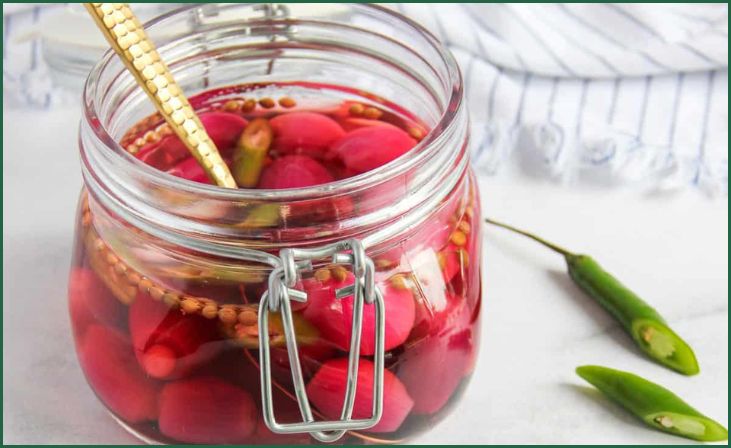
Embarking on the journey of Fermenting Pearl Onions for Zesty Pickle Trays is not just a culinary venture but an exploration of the nuances that elevate the art of pickling. Here, we unveil expert tips that will guide you through the final touches, ensuring your pickle trays are nothing short of perfection.
Sealing the Jars
As you approach the culmination of the pickling process, pay meticulous attention to sealing the jars. This is more than just a practical step—it’s a promise to preserve the freshness of your fermented pearl onions. Imagine the satisfaction of hearing the subtle pop as each jar is securely sealed, locking in the flavors and textures that have developed during the fermentation dance. This attention to detail ensures that every bite is a burst of zesty goodness, a testament to the craft you’ve invested in your culinary creation.
Temperature Matters
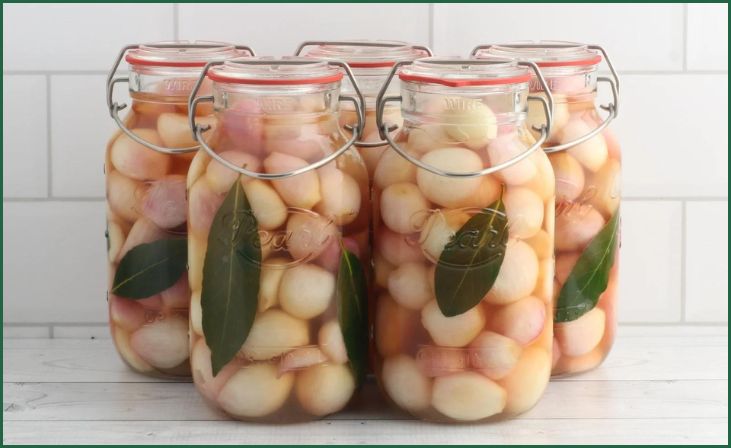
Delve into the world of temperature, a critical factor that can make or break your pickling endeavor. Explore the impact of temperature on the fermentation process, uncovering the ideal conditions for achieving the perfect pickle. Picture a kitchen where the ambient warmth encourages the transformation of pearl onions into flavorful delights. This expert tip is a reminder that, like a conductor guiding an orchestra, you have control over the environment, steering it towards the symphony of tastes you desire.
Experimenting with Flavors
The true artistry of pickling lies in the willingness to be bold, to step beyond the conventional and embrace the realm of experimentation. Dare to be adventurous by exploring different flavor profiles, from spicy to sweet, and everything in between. Imagine the thrill of discovering the perfect combination that aligns with your palate, turning your pickled pearl onions into a personalized culinary masterpiece. This expert tip encourages you to view pickling not just as a process but as a canvas for your creativity—a canvas that invites you to paint with flavors, creating a symphony of taste that resonates with your unique culinary identity.
Also Read:- Fermenting Broccoli
Conclusion
In conclusion, mastering the art of Fermenting Pearl Onions for Zesty Pickle Trays opens up a world of culinary possibilities. Elevate your pickling skills, tantalize your taste buds, and impress your guests with these flavorful delights.
FAQs
Q: Can I use regular onions instead of pearl onions?
Q: Can I use regular onions instead of pearl onions?
Absolutely! However, pearl onions offer a unique bite-sized appeal.
Q: How long does the fermentation process take?
Q: How long does the fermentation process take?
On average, fermentation takes 7-10 days, but monitor for desired taste.

